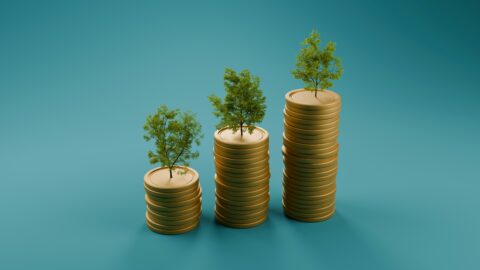According to our evaluation, the Danish Ørsted AS is among the leading companies in the environmental sector, which results from a radical transformation of the business model that the company has gone through in the recent decade.
Whereas ten years ago the company produced 85% of its energy from fossil fuels and only 15% from renewable forms of energy, this ratio has inverted since then. At the same time, Ørsted’s CEO, Henrik Poulsen, is committed to the goal of “becoming ‘largely carbon-neutral’ by 2025.” CO2 emissions have been cut by a total of 60% since 2006.
A new name for a new strategy
The transformation of the company is also reflected in the change of its name: the former DONG Energy (Danish Oil and Natural Gas) regarded itself as a pioneering company in the development of coal-fired power plants as recently as in 2009. Since then, the company has transformed itself comprehensively into a top player in renewable energy. Corporate Knights has included them in a global ranking of the most sustainable companies of the world.
Hans Christian Ørsted, who discovered electromagnetism in 1820, was chosen as eponym of the new company.
Our assessment of the company
Among the main businesses of Ørsted is the production and distribution of electricity and heat. After the sale the oil & gas business in 2017, the energy mix in 2019 was made up of 86% renewable energies (wind power and biomass) and 14% as-of-yet undivested interests in coal and gas. By 2025, the share of renewable energies is to be ramped up to 99%, as all coal-fired power plants are earmarked for conversion to sustainable biomass. Ørsted is the world’s biggest owner of wind power projects and wants to double its share by 2025.
This supports the transition to a more sustainable energy system.
Ørsted’s CO2 intensity (tonnes of CO2 per kWh) beats that of its peers, which is due to its radical transformation strategy in recent years. A proprietary technology developed by the company (“Renescience”) also allows for the fractioning of domestic waste and for its use in the production or the recycling of green energy.
In addition to development and innovation in the environmental field, Ørsted also scores highly across other areas of sustainability: in 2018, it had fewer workplace accidents than its competitors, and the members of its supervisory board are independent. In line with an international trend, Ørsted has also integrated the implementation of sustainability goals in its management remuneration.
Radical change is possible
Despite the interests in the coal industry that the company still holds in its portfolio, we have chosen Ørsted AS as best-practice example because it has shown that by pursuing radical procedures sustainable goals can be integrated and achieved within a decade – even from a challenging starting point. In view of the urgency of environmental and climate issues and the fact that – in violation of the reduction target of 40% in emissions by 2030 relative to 1990 as specified by the European Union – annual emissions are still rising, it seems crucial to be able to resort to best-practice examples.
“Companies that have set themselves a reduction target for emissions by 2050 have to think about whether they can achieve it sooner and be even more ambitious. We have shown that one can be much more radical than one might think” (Henrik Poulsen, CEO, Ørsted AS).
Legal note:
Prognoses are no reliable indicator for future performance.
Legal disclaimer
This document is an advertisement. Unless indicated otherwise, source: Erste Asset Management GmbH. The language of communication of the sales offices is German and the languages of communication of the Management Company also include English.
The prospectus for UCITS funds (including any amendments) is prepared and published in accordance with the provisions of the InvFG 2011 as amended. Information for Investors pursuant to § 21 AIFMG is prepared for the alternative investment funds (AIF) administered by Erste Asset Management GmbH pursuant to the provisions of the AIFMG in conjunction with the InvFG 2011.
The currently valid versions of the prospectus, the Information for Investors pursuant to § 21 AIFMG, and the key information document can be found on the website www.erste-am.com under “Mandatory publications” and can be obtained free of charge by interested investors at the offices of the Management Company and at the offices of the depositary bank. The exact date of the most recent publication of the prospectus, the languages in which the fund prospectus or the Information for Investors pursuant to Art 21 AIFMG and the key information document are available, and any other locations where the documents can be obtained are indicated on the website www.erste-am.com. A summary of the investor rights is available in German and English on the website www.erste-am.com/investor-rights and can also be obtained from the Management Company.
The Management Company can decide to suspend the provisions it has taken for the sale of unit certificates in other countries in accordance with the regulatory requirements.
Note: You are about to purchase a product that may be difficult to understand. We recommend that you read the indicated fund documents before making an investment decision. In addition to the locations listed above, you can obtain these documents free of charge at the offices of the referring Sparkassen bank and the offices of Erste Bank der oesterreichischen Sparkassen AG. You can also access these documents electronically at www.erste-am.com.
Our analyses and conclusions are general in nature and do not take into account the individual characteristics of our investors in terms of earnings, taxation, experience and knowledge, investment objective, financial position, capacity for loss, and risk tolerance. Past performance is not a reliable indicator of the future performance of a fund.
Please note: Investments in securities entail risks in addition to the opportunities presented here. The value of units and their earnings can rise and fall. Changes in exchange rates can also have a positive or negative effect on the value of an investment. For this reason, you may receive less than your originally invested amount when you redeem your units. Persons who are interested in purchasing units in investment funds are advised to read the current fund prospectus(es) and the Information for Investors pursuant to § 21 AIFMG, especially the risk notices they contain, before making an investment decision. If the fund currency is different than the investor’s home currency, changes in the relevant exchange rate can positively or negatively influence the value of the investment and the amount of the costs associated with the fund in the home currency.
We are not permitted to directly or indirectly offer, sell, transfer, or deliver this financial product to natural or legal persons whose place of residence or domicile is located in a country where this is legally prohibited. In this case, we may not provide any product information, either.
Please consult the corresponding information in the fund prospectus and the Information for Investors pursuant to § 21 AIFMG for restrictions on the sale of the fund to American or Russian citizens.
It is expressly noted that this communication does not provide any investment recommendations, but only expresses our current market assessment. Thus, this communication is not a substitute for investment advice.
This document does not represent a sales activity of the Management Company and therefore may not be construed as an offer for the purchase or sale of financial or investment instruments.
Erste Asset Management GmbH is affiliated with the Erste Bank and austrian Sparkassen banks.
Please also read the “Information about us and our securities services” published by your bank.


